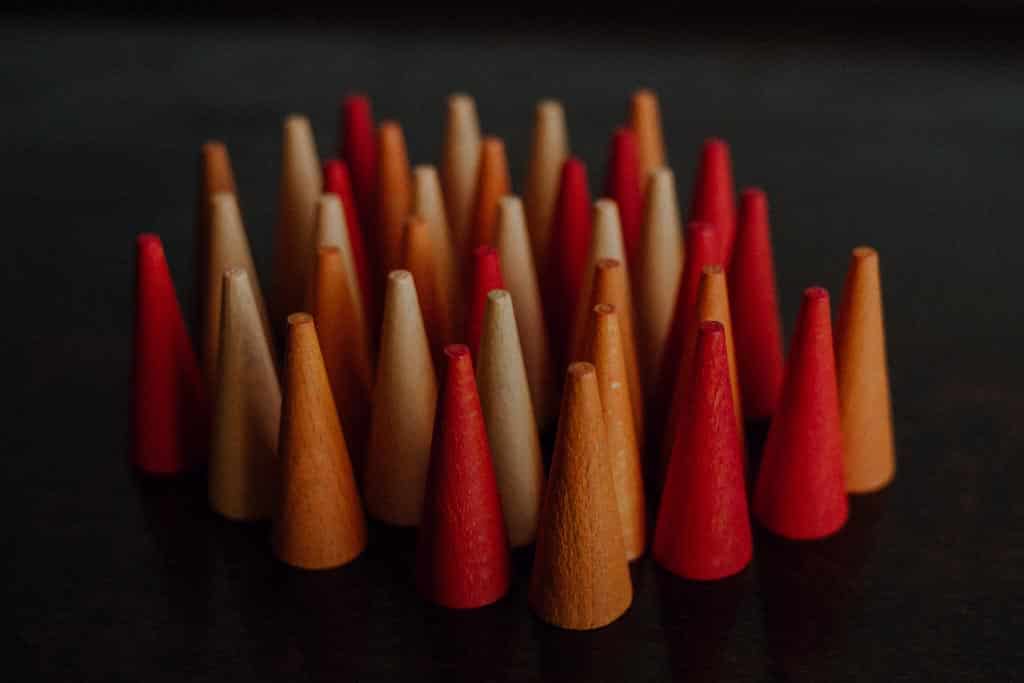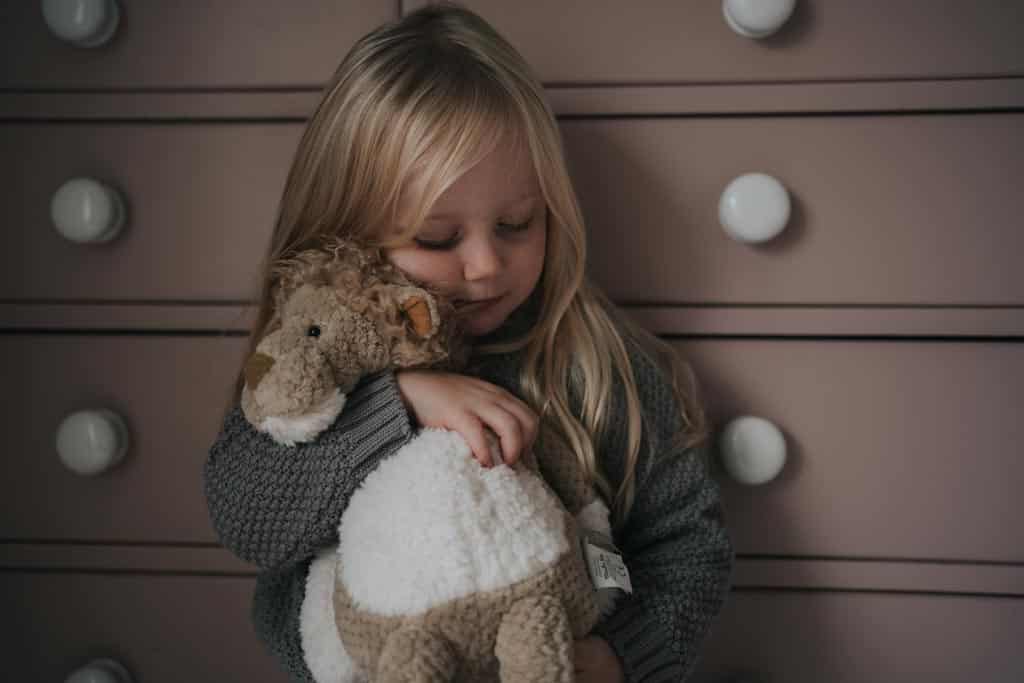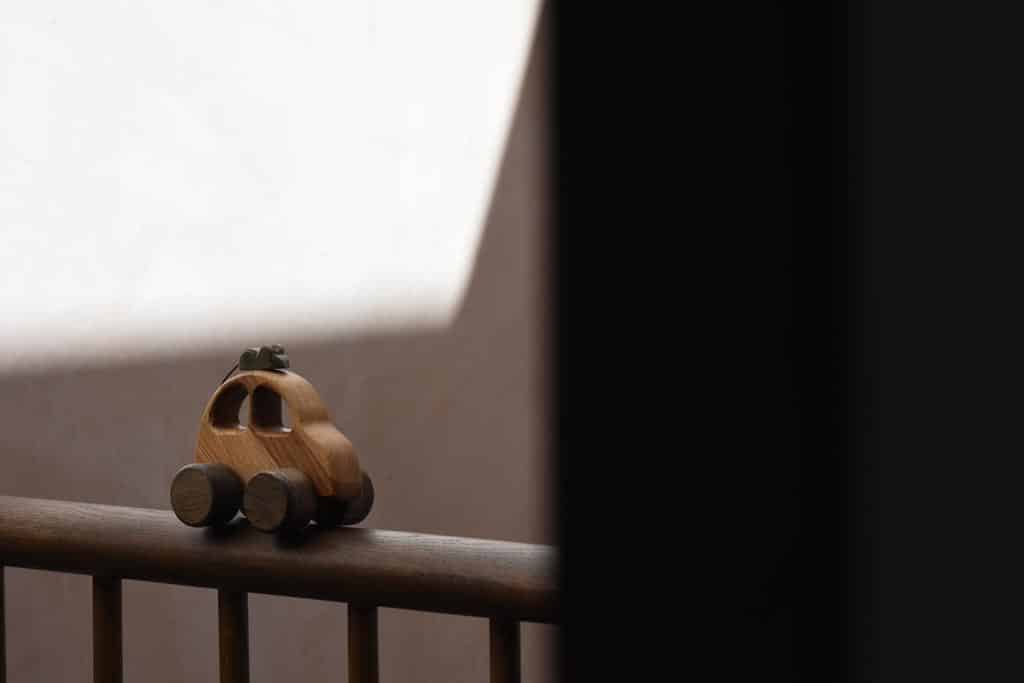Do you ever feel like your home is full-to-bursting with toys that you don’t want and didn’t ask for?
The children in the 100 Toys house are 6, 5, 4 and 2 years old. That’s 17 Christmasses and 17 birthdays in total. Gifts from parents, grandparents, uncles and aunts, plus stocking fillers. It’s not unusual for a child’s Christmas haul to come to at least 10 presents. (17 + 17) x 10 = 340…
Now add in gifts throughout the year – something from the museum shop, a toy to keep them occupied on a flight, something at Easter, and at Halloween. That’s all before they start school and have parties to which the whole class is invited and you can reasonably expect to receive 30 presents for one child in a single day…

Children need fewer toys
When I launched the website my initial idea for The 100 was to create a list of 100 essential toys for every under-five, but seeing it written down it felt too pushy, too focused on consumption. One hundred toys? From birth to five?
It was more in keeping with our ethos to make the 100 about activities and experiences. There are fewer than ten toys on the list.
But now I’m revisiting the idea because it no longer seems so preposterous.

Even 100 is an outrageous number
You don’t have to look far on the blog to see that I think that children can thrive with far fewer than one hundred toys. In fact it’s good for them. Blocks, figures, fabric, a few everyday household objects, some art materials and access to outdoor space. That’s it.
So why am I creating a list like this?
Because people are going to buy your children toys anyway. Kindly relatives will happily ignore your requests to give them tickets to a show or a castle instead. Friends don’t want to arrive empty handed at the party. People want to put something under the tree.
If your family are like this (and mine are), what I’ve found works is to politely give them a list of toys that you’re OK with and, more importantly, are developmentally appropriate for your child.
Toys are going to arrive in your house whether you like it or not. You might as well try to ensure that what your child receives is going to challenge and absorb them, not just amuse them for half an hour, before it goes in the bag for that furtive trip to the charity shop.
Not all children like all toys
You can get years of play value out of a toy kitchen or doll’s house. Even babies who can’t yet stand unaided will pull themselves up and enjoy a rudimentary version of this sort of play.
But use of the doll’s house divides along gender lines in the 100 Toys house. The girls are happy to sit there for hours, setting the table and tucking the figures into bed; the boys use it for target practice.
The boys do love small world play, it’s just that they’d rather build a castle or recreate battles from the Hundred Years War. And that’s OK.
In this case, the important thing is that the doll’s house provides them all with opportunities for imaginative play. The context is irrelevant. This is why The 100 list exists – to show you the kinds of activities that you could and should offer.

A path from birth to five in toys:
So here it is, the list of one hundred toys for the first five years.
If you get all of these, you’ve covered a lot of the bases, developmentally. The gaps are filled in by all that time you spend outdoors, going to museums, reading stories and singing nursery rhymes
Take this list with a pinch of salt. None of it is truly necessary. I’m not saying you should buy it all, simply that if you’re going to buy something, this list is a good place to start. The toys are, for the most part, open-ended and all are age-appropriate.
Toys for newborns
New babies have a lot to learn. Where does one object end and another begin? What are those appendages sticking out of my body and what do they do? How do I repeat that jingling sound? It was fun!
- Play mat and baby gym. Baby gyms encourage babies to move and grasp. They also help develop midline play, where hands come together in the middle. Hang high-contrast pictures and toys from the bar, and place toys like musical balls or graspers to the side, so your baby can learn to roll, eventually all the over onto her tummy.
- Mirror. Babies like to study faces, and when there’s no-one else to interact with, they delight in looking at themselves. During their first months, they’re not even sure who the person in the mirror is, though this doesn’t seem to detract from the fun.
- Activity toy
- A mobile, suspended above a cot or pram provides vital visual stimulation, helping your baby’s eyes to develop focus and control. Go for high-contrast, black and white images and a mobile that allows you to change the pictures so it never gets dull.
- Sing lullabies. OK, this one’s not a toy, but it’s the most important thing in theThe simple melodies of a traditional lullaby such as Hush, Little Baby, don’t only provide comfort and reassurance, they help your baby’s hearing develop and lay the foundations for the musicality of everyday speech later on.
Toys for 6 month olds
- Treasure basket
- First set of blocks
- Stacking tower
- Puzzles: circular peg puzzles (easiest), four-way rotational symmetry, three-way, one-way (hardest, suitable from 10-12 months)
- Shape sorter: animals
- Bowls (simple, for sorting, or nested)
- Balls (wooden, for rolling; fabric, for catching)
- Rattle. Even if they can’t yet hold it themselves, a rattle shaken by you helps your baby learn to track sounds. As eyesight develops, a rattle or grasper with visible moving parts – like beads – links sights and sounds, showing them cause and effect and giving them a great sense of accomplishment when they do finally get to shake it themselves.
Your baby’s first year is all about exploring her senses and the world around her. How does it smell? Is it rough or smooth? Noisy or quiet? Your job is to help her notice these differences, to understand them and to label them with words.
You don’t need toys for this. A treasure basket full of bits and pieces you find round the house is good enough for any six-month-old.
A baby’s first year is about discovery. Toys have their place. But they can wait.
Focus on: puzzles
In many ways, puzzles contradict our open-ended play ethos. Most puzzles can only be completed one way and can be outgrown quite quickly as your child’s skill grows. And yet puzzles are still so vital. Why? Because they foster and develop so many crucial skills. Whether it’s a simple wooden single-piece puzzle with little handles, or more complex jigsaws, sorting and matching games, children need fine-motor precision, focus and determination to succeed with their puzzling projects. They need to think logically and find strategies to succeed. A one-year-old learns that pieces must be rotated to fit while an older child discovers that it’s best to start with the corner pieces and edges and to sort by colour. These are essential skills that, once mastered, can be applied to more creative endeavours.
Focus on: a treasure basket
A treasure basket is a free and simple way to stimulate your child’s innate sense of curiosity and wonder. At this age your child is discovering new textures, smells, sounds and sensations as they try to understand the world around them. A treasure basket is simply a way of giving your baby a selection of things to play with and investigate. They can follow their curiosity, grasping, banging and mouthing anything of interest whilst discarding everything else. It’s especially fun for babies who can sit up, supported by a cushion or ring if necessary, but aren’t yet mobile. You can use everyday objects, such as wooden spoons, an old bracelet or a silicon ice-cube tray. The trick is to offer a wide selection that appeals to all the senses. And make sure the objects are safe. No choke hazards or toxic paints. But don’t stress if your treasure doesn’t isn’t all entirely homespun – you can mix it up with the toys you already have like balls, rattles or dolls. The important thing is to keep it fun.
Toys for 1 year olds
- Vehicles
- Peg people and other figures
- Rattle (or make a discovery bottle)
- Conical tower
If you only buy one thing: figures
In play figures, children recognise themselves and their families, friends and pets. Playing with them helps them consolidate their understanding of the world, from driving a car to cooking in the kitchen. If your child is already confidently playing with blocks, adding a few figures to their play will also encourage them to bring dialogue and stories into their play. When animals join the cast, children can explore characteristics and habits: the sly fox, the cheeky monkey, the fierce lion. When choosing play figures, there’s an argument to be made for favouring those that are pared back, without too many facial features or clothes that overtly genderise or otherwise pre-determine the game. But having said that, my 25-month-old daughter will happily pretend that the two potatoes on her plate are old friends and the four-year-old suspends her disbelief sufficiently to imagine that her Maileg mouse is really Elsa from Frozen. Children love to have just the right figure for their small world play, but it’s not essential. Their imaginations will fill in the gaps.
Toys for 2 year olds
- Doll’s house and people
- Trolley
- Basket
- Fabric
- Soft toy
- Bucket and spade
- Ball track
- 2-piece puzzles
- Nested and stacking toys
- Sorting boxes and bowls

Focus on: fabric
Pieces of fabric, and ideally playsilks in a range of colours, can be a surprisingly useful and popular addition to the toy box. That’s because fabric is so versatile; it’s one of the most open-ended toys you can get. Your child can use fabric to create scenery in their imaginative and small-world play (a blue silk is a river or the sky, a green one a mountain etc.) They can sling pieces of fabric over a table or a washing line to make a tent for their dolls or a den for themselves. Fabric wrapped around a head becomes a nomad’s scarf and tied around a waist a bride’s train. Tie it to your wrists and it’s a fairy’s wings, wrap it around your legs and it’s bandages at the hospital. Silks or ribbons tied to the end of stick make beautiful, free streamers, which also lay the foundation for the up and down strokes your child learns when they begin to write.

Focus on: doll’s house
In a doll’s house children recreate scenes from everyday life and try to understand their position in the family and the world. Observing their doll’s house play allows you to see what your child understands of power dynamics and gender. Who takes out the bins? Who does the cooking? Whose house is it? It’s also a chance for children to enjoy role-playing situations not normally open to them: answering the door to the postman (or a tiger!); going to work; cooking dinner. Go for a gender-neutral doll’s house, with natural colours and without too much elaborate detail, and you can also use it for other small-world settings. Something plain that provides a setting without dictating it, can be a doll’s house one day or an astronauts’ space station the next. Bring blocks, figures, fabrics and other items to your doll’s house and you can extend the play in almost any direction. To learn more about the importance of doll’s house play and how to extend it, read our guide.

Toys for 3 year olds
- Threading buttons and beads (or use the sewing kit)
- Second set of blocks (more varied shapes)
- Dressing up clothes, or hats and tails (or use silks or fabric you find at home). Box of props.
- Play food
- Play kitchen
- Loose parts (or use dried beans and pasta)
- Wooden railway
- Toys for early maths: geometric shapes, pattern-making

If you only buy one thing: blocks
There simply isn’t a more versatile or durable toy than a good set of wooden blocks. With blocks your child has the scope to build, sort, carry, count, create and imagine. Starting from that very first attempt to place one block on top of another, through to complex imaginative play where blocks represent something entirely different, blocks are the definition of open-ended play. There are many different types of wooden blocks for children, from colourful or natural wood to perfectly square or irregular shapes. The key things to look out for when choosing blocks are the trueness of the cut (wonky blocks make for wobbly towers) and chew-friendly non-toxic stains that allow your child to feel the warmth and texture of natural wood in their hands. Natural-finish blocks can also make building more successful. Glossy paints look bright but can make the surfaces more slippery and constructions less stable. Read our Guide to Block Play for inspiration and to understand how your child’s developing understanding is reflected in their creations.
Toys for 4 year olds
- Card games
- Board games
- Art materials
- Puppets
- Tools
- (Toys for investigating nature – magnifying glass)
- Marble run
- Numbers and letters

Focus on: art materials
Before they learn to write at school, your child will more than likely sit at the kitchen table, scribbling and drawing and cutting-out and sticking. This vital foundation work stimulates and hones their fine-motor skills and hand-eye co-ordination, focus, determination and creativity. Providing them with the best quality materials will help them achieve effective and pleasing results, teaching them early on, to associate time spent at the drawing board with pleasure and success. Go for good quality paper that doesn’t tear or disintegrate. Use high quality wax crayons with profiles that are made for the smallest hands to hold, in colours that glide and stay on the page. And provide scissors that little fingers can manoeuvre around a line without too much difficulty. Using scissors is an excellent work out for pincer grip and can help them with everything from holding cups to doing up shoe-laces later on. If you have space, painting and drawing at an easel is an excellent way to develop wrist strength and the hand-eye co-ordination required for handwriting when they get to it.
You can see how you might be able to have multiples of some of these without your house feeling overwhelmed with toys. You’ll want more than one board game and several different kinds of art materials (which will also need to be replenished). A four- or five-year-old is very happy to receive a nice set of pencils or paints as a gift.
Extras
I used to object to things like scratch papers, colouring books, stickers and other activities you could only do once, on the grounds that I had all the art materials at home and you never seemed to get much in the packet anyway. You generally got one use, and the outcome was often prescriptive, with little scope for the child’s imagination. But having seen my own children be inspired by such products, to tackle a skill they’ve hitherto been reluctant to take on, I’ve softened a bit. I still think your first step should be the craft box, but these sets have their place, if only as a low-priced gift. And being disposable in nature, they’re not a source of clutter once they’ve been used – a big selling point in our house!
Final word
This is a list of toys you really don’t need.
But, with luck – and help from friends and family – it may help you escape the fate-worse-than-death that is a house full of noisy, irritating one-trick ponies that are destined for the dump via an extended stay on your living room floor.
Instead of fuming quietly about another pointless birthday gift, you can ask your well-meaning friends and family to refer to this list when they ask you what they should give. It’s more toys, yes, but toys that make a difference to the quality and impact of their play. And that’s surely a gift we’re all happy with.
Happy playing!
P.S. If you’ve been counting, yes, it wasn’t 100 toys. I couldn’t bring myself to stretch it that far. But I hope it’s long enough to have given you some inspiration.




